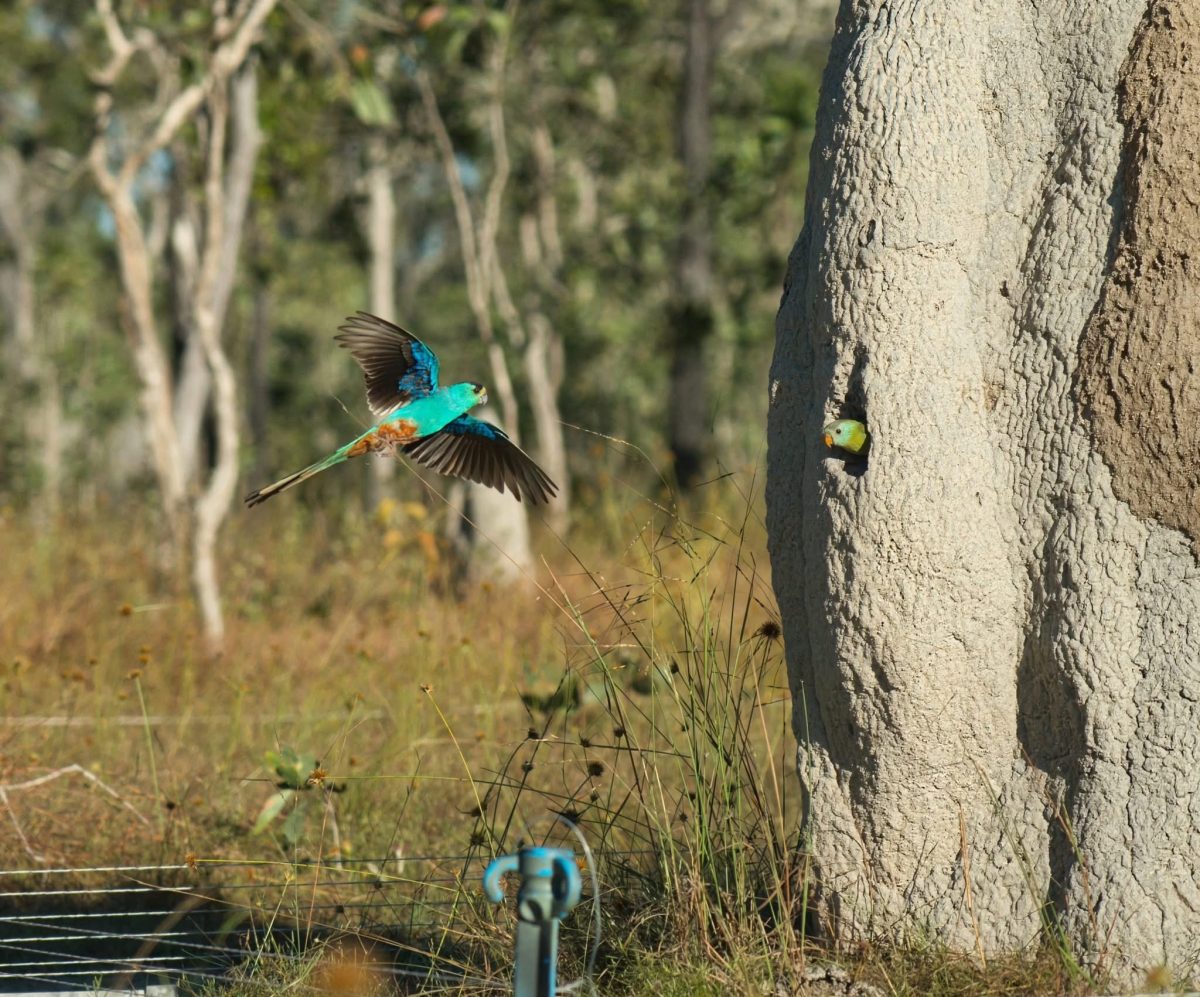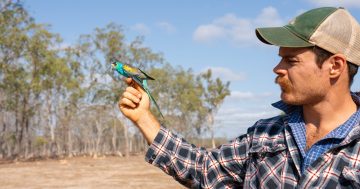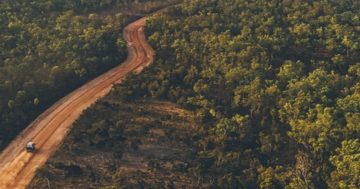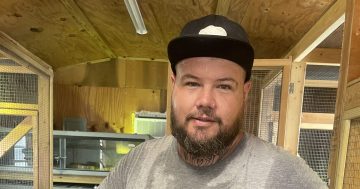
A young golden-shouldered parrots flies out of its nest for the first time – an increasingly common sight thanks to a simple-yet-effective conservation method. Photo: Braydon Moloney.
Conservation efforts for one of Cape York’s most famous birds have shown undeniable results, with a 43 per cent increase in nesting success reported over three breeding seasons.
In the 2023 breeding season, a dedicated group of conservationists at Artemis Station began a trial to protect the nests of the golden-shouldered parrots, which have now been on the endangered species list for a quarter of a century.
The trial involved an electric fence barrier placed around nests to deter natural predators like goannas and tree snakes, and with each breeding season, the team were able to secure more fences to protect more nests.
While simple, the impact was profound.
Pre-management, just 33 per cent of nests resulted in chicks, and by the end of the 2025 breeding season last month, the team reported a 76 per cent nest success rate – more than doubling the chances of baby parrot survival.
Conservation Partners senior conservation officer Patrick Webster said the 76 per cent success rate figure was a huge accomplishment.
“That’s exceptionally high; the thing that we’ve got to remember is that predation of nests is natural,” he explained.
“The only difference here is that we are dealing with a really endangered population, where we’ve got all these other threatening processes, and we can’t afford these other predation pressures to further limit the population.
“That fledgling success rate of 76 per cent, it would be sitting above what would be considered natural for the [species], which means we’re adding more parrots to the population, which is what we want.”
The conservationist said the golden-shouldered parrots typically had a clutch size of five to six eggs, and, when predated, all the eggs were usually taken.
The success rate figure was standardised based on the nests they managed to find throughout each breeding season.
“They typically nest from the end of March, beginning of April, all the way through to July,” he said.
“Obviously, we try our best to find every nest, but even with the weeks and months of search effort we put in, we’re never going to find them all, and we aren’t going to know the fate of those that we don’t find.
“This year, we fenced 12 nests; there was one further nest we found that, unfortunately, had been taken by a goanna just before we’d found it.”
Mr Webster said with the team spending months searching for nests in order to install the fences, the sight of baby parrots flying out of the nest for the first time was a touching moment to witness.
“It’s a pretty incredible feeling, because you put so much effort and care into each nest, not only in finding them, but then protecting them,” he said.
“You get to know the parents really well, because you’re monitoring them, and then you get to know the chick really well while you’re watching them grow, and you can become so invested in them.
“You want every single one to be successful and go on and add to the population.”






